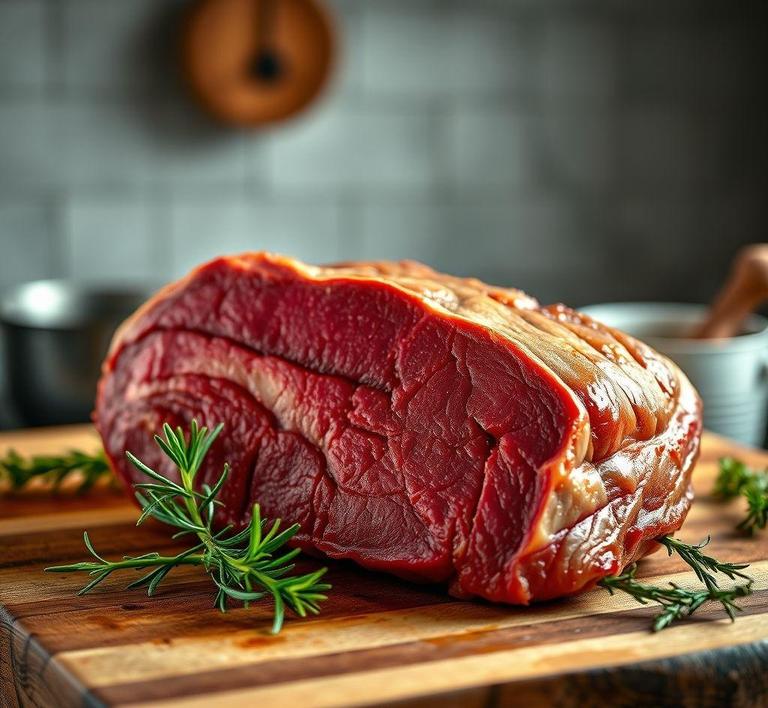Refreezing elk meat can be a bit of a tricky topic for hunters and meat enthusiasts alike. While it’s generally best to avoid refreezing meat to preserve its texture and flavor, there are situations where you might need to do it-like if you thawed it but didn’t cook it in time. The good news is that, with proper handling, you can refreeze elk meat without compromising its quality too much. To ensure the meat stays safe to eat and maintains its best possible taste, it’s important to follow some key steps, like making sure it’s properly thawed and quickly re-frozen in an airtight container. Let’s dive into how you can do this while keeping your elk meat in tip-top condition!
Can You Refreeze Elk Meat?

Yes, you can refreeze elk meat, but doing so correctly is crucial to ensure safety and maintain as much quality as possible. Elk, a prized wild game meat known for its lean texture, deep red color, and subtly sweet, earthy flavor, deserves careful handling-especially when freezing and refreezing are involved.
The key to safely refreezing elk meat lies in understanding the conditions under which it was previously thawed. If the elk meat was thawed in the refrigerator and has remained at a safe temperature (below 40°F or 4°C), it is generally safe to refreeze. However, if the meat was left out at room temperature or thawed in warm water or a microwave, it’s best not to refreeze it, as bacteria may have begun to proliferate.
Wild game meats, including elk, are more sensitive than commercially raised meats due to their lower fat content and natural variability in diet and activity. This makes them more prone to texture and moisture loss during the freeze-thaw-refreeze cycle. Nonetheless, with proper thawing and prompt attention, refreezing can be done without significant compromise.
How To Refreeze Elk Meat?
Refreezing elk meat requires a bit of culinary mindfulness. Here’s a step-by-step guide to doing it right:
-
Assess the Condition:
Begin by evaluating the condition of the thawed meat. It should still smell fresh-slightly metallic, earthy, and not sour or off. The color should remain vibrant, not brownish-gray. If any slime, odor, or discoloration is present, discard the meat rather than risk refreezing.
-
Chill Quickly:
If the meat has been thawed in the refrigerator and remains cold, refreeze it as soon as possible. The longer the meat remains exposed, the greater the chance for quality degradation and bacterial growth.
-
Portion and Repackage:
Divide the meat into smaller, usable portions to avoid repeated thawing. Vacuum sealing is ideal, as it minimizes exposure to air and prevents freezer burn. If a vacuum sealer is not available, wrap the meat tightly in plastic wrap, followed by a heavy-duty freezer bag or butcher paper.
-
Label Clearly:
Mark the date of refreezing on each package. Refrozen elk should ideally be used within 2-3 months to enjoy optimal flavor and texture. While it may remain safe longer, quality declines over time.
-
Freeze Rapidly:
Place the meat in the coldest part of your freezer-typically the back-so it freezes as quickly as possible. Quick freezing preserves the meat’s cellular structure and reduces ice crystal formation, which is the primary culprit of texture loss.
Quality Impact
While refreezing elk meat is safe if handled properly, it inevitably has some impact on quality. Elk is naturally lean, which makes it more susceptible to moisture loss during freezing. When meat is frozen, ice crystals form between the muscle fibers. Thawing and refreezing lead to the breakdown of these fibers, causing the meat to release more juices. This results in a drier texture and diminished tenderness once cooked.
Flavor can also suffer, though less dramatically. The more exposure to air and temperature fluctuation the meat endures, the more likely it is to develop oxidative flavors-a faintly metallic or stale taste. Proper sealing helps prevent this, but even under ideal conditions, refrozen meat will rarely match the fresh-thawed original in succulence.
That said, elk meat that has been refrozen can still be delicious if prepared thoughtfully. Slow, moist-heat cooking methods like braising, stewing, or slow roasting can help mitigate texture issues and draw out the deep, complex flavors elk is known for. Marinades also work well to reintroduce moisture and complement the meat’s naturally gamey character.
Refreezing elk meat is not only possible, but safe-provided it was thawed properly and has remained at refrigerator temperatures throughout. While some loss in texture and moisture is inevitable, these effects can be minimized with swift handling, proper storage, and thoughtful preparation techniques.
Ultimately, the key to preserving elk meat’s rich flavor and prized texture lies in respect-for the animal, for the ingredient, and for the process. Whether you’re preparing backstrap medallions, hearty elk chili, or a slow-simmered stew, treating the meat with care at every step ensures that every bite is worthy of the wild.
So yes, you can refreeze elk meat. Just do so with intention, and your efforts will be richly rewarded at the dinner table.
Is It Safe To Refreeze Elk Meat?
The short answer is: Yes, it is generally safe to refreeze elk meat-but with very specific conditions. The key lies in how the meat has been handled since its initial thaw. If elk meat has been thawed in the refrigerator and has remained at a temperature below 40°F (4°C), it is typically safe to refreeze. However, each refreezing cycle may come at the cost of quality.
When elk meat is frozen, thawed, and then refrozen, the ice crystals formed during the freezing process rupture muscle fibers, leading to a potential loss of texture and moisture. While these changes don’t necessarily pose a health risk, they can diminish the meat’s eating quality, especially in tender cuts like loin or backstrap. Still, for ground meat or stew cuts, the effect is less noticeable.
Caution must be taken if the meat was thawed at room temperature, in warm water, or left out for extended periods. These conditions can allow harmful bacteria-like Salmonella or E. coli-to multiply, rendering the meat unsafe even if it’s cooked afterward. Once bacteria reach unsafe levels, refreezing does not undo the damage.
Signs That Elk Meat Should Not Be Refrozen
Knowing when not to refreeze is just as important as knowing when you can. Here are clear warning signs that elk meat should be discarded rather than re-frozen:
-
Off-putting odor:
Elk meat has a distinctive, rich, gamey scent, but it should never smell sour, ammonia-like, or rotten. An unpleasant odor is a strong indicator of spoilage.
-
Sticky or slimy texture:
While thawed meat may be moist, it should not feel tacky or sticky. A slimy film on the surface is a red flag that bacterial activity is underway.
-
Discoloration:
Healthy elk meat should be a deep red to purplish hue. If you notice gray, greenish, or brown spots-especially if paired with a foul smell-it’s safest to discard it.
-
Excessive time at room temperature:
Meat left out for more than two hours (or one hour if the room is above 90°F/32°C) falls into the danger zone, where bacteria thrive. Even if the meat looks okay, it may no longer be safe to eat or refreeze.
Common Refreezing Mistakes
Many people unwittingly compromise food safety and meat quality with common refreezing missteps. Here are some to avoid:
-
Refreezing after improper thawing:
Thawing meat on the countertop or in warm water invites bacterial growth. Only meat thawed in the fridge should be considered for safe refreezing.
-
Not repackaging before refreezing:
Once thawed, meat packaging may no longer be airtight. Moisture loss (freezer burn) and oxidation can occur if it’s not properly vacuum-sealed or wrapped in freezer-safe materials.
-
Refreezing too many times:
While it’s technically safe to refreeze once, repeated freeze-thaw cycles cause significant quality degradation. Limit it to a single refreeze whenever possible.
-
Ignoring temperature control:
Freezers should maintain a constant temperature of 0°F (-18°C) or lower. Fluctuations-such as those caused by power outages or frequently opening the door-compromise safety.
Tips And Tricks
Here’s how to manage your elk meat stash like a pro, ensuring both safety and quality every step of the way:
-
Portion before freezing:
Divide elk meat into usable portions before the first freeze. This minimizes waste and prevents unnecessary thawing and refreezing.
-
Use vacuum sealing:
Vacuum-sealed meat retains moisture and freshness better than meat stored in simple freezer bags. It also helps prevent freezer burn.
-
Label with date and thaw method:
Keep a record of when the meat was frozen and how it was thawed. This takes the guesswork out when you’re trying to decide whether refreezing is safe.
-
Cook after thawing:
If you’re unsure about the safety of refreezing, your best option is to cook the meat and then freeze the cooked product. Cooking kills bacteria, and the cooked meat freezes well-especially for use in soups, stews, or casseroles.
-
Rapid chill before refreezing:
If you’ve thawed elk meat but want to refreeze it, chill it rapidly in the refrigerator. Don’t let it linger in the ‘danger zone’ for hours.
Conclusion
Refreezing elk meat isn’t inherently dangerous-but it demands mindfulness, attention to temperature, and an understanding of meat preservation principles. Proper handling from the field to the freezer, and from thawing to refreezing, makes all the difference between a delicious game dinner and a food safety risk.
While elk meat is a rich, protein-packed delicacy from the wild, it also requires the respect and care it deserves. By watching for spoilage signs, avoiding common mistakes, and following smart handling tips, you can ensure your elk stays not only edible but enjoyable for months to come.


